History
INTA was created in 1942, due to the need for Spain to have a center dedicated to aeronautical research. The Institute opened up to collaboration abroad, despite the political isolation of Spain in those years. The Hungarian Theodore von Kármán, considered the greatest specialist in aeronautics of the 20th century, established very close ties with INTA. It is also worth noting the role played by Esteban Terradas, president of the first INTA Board of Trustees, a position he would hold until his death in 1950.

One of INTA's first functions consisted of taking responsibility for the control of commercial aviation devices. But it soon opened up to other fields, such as the automobile industry, in which it continues to work today. Specifically, it deals with the safety of technical conditions through the Department of Land Platforms and Vehicles, whose precedent was created in 1958. The infrastructure that was endowed then served for the Institute to function as a national laboratory for certification and control of quality.
From aeronautics to aerospace
NASA was created in 1958. In its first manned program, Mercury, aimed at checking man's chances of survival in space, INTA is already present. In the 1960s, the institute was renamed the National Institute of Aerospace Technology and marked a close Spanish-American collaboration in aerospace matters, starting with the first agreement with the United States, signed in 1960. The agreement refers to the construction of a NASA space tracking station to precisely support the Mercury project; the station would be built in Maspalomas (Gran Canaria) and would enter service in September 1961, following mission no. 4 of the Mercury project, an unmanned capsule that circled the Earth. It must be said that, at that time, Maspalomas is fully operated by North American technicians; however, the presence of INTA personnel there allowed them to get to know NASA's equipment and work methods up close.

Maspalomas Space Station (1960s). Photos: ESA.

NASA Apollo Station in the Canary Islands (CYI). White Mountain. Year 1971. Photography: Joseph William Hirman.
The Tracking Stations of the 60s
In 1960, Spain became a member of the European Space Research Organization (ESRO), the predecessor of the current ESA (European Space Agency).
And in those sixties that assist the development of the Gemini and Apollo programs, a contract signed between NASA and INTA allows the incorporation of Spanish personnel to the work carried out in Maspalomas.
But the Apollo project requires new media, and the network of monitoring stations needs to be expanded with three new ones, which will make up Deep Space Network (DSN), the largest and most sensitive telecommunications system in the world . They will be located in the United States, Australia and Spain; the Spanish station, in Robledo de Chavela. The reason for this situation is that, being separated by 120° of Earth longitude, it is guaranteed that, at any time of the day, any of the three stations can communicate with the spacecraft.
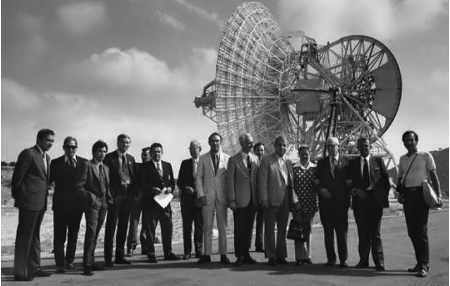
Fresnedillas station
In this way, the station of follow-up of Robledo de Chavela was born, to which soon the neighbors of Fresnedillas and Cebreros were added. The Fresnedillas station collaborated in all the Apollo missions from the number 7 (first manned Apollo mission in orbit around the Earth), and was the one that was of service at the moment that the Apollo 11 landed on the Moon. These stations have progressively been directed by INTA: Cebreros in 1969, Robledo in 1970 and Fresnedillas in 1972.
In all these years, there have been numerous missions followed since them: the Mariner IV mission, Apollo 11 that took man to the Moon; the Viking probes, which made contact with Mars; Voyager 1 and 2, which have moved more than 10,000 million kilometers from Earth, leaving the Solar System; Cassini-Huygens, which have reached Saturn; Mars Reconnaissance Orbiter, which is in orbit of Mars; Venus Express, a joint ESA-NASA mission.
COSPAS-SARSAT
COSPAS-SARSAT is an international humanitarian program dedicated to the search and rescue of people in situations of danger anywhere in the world. COSPAS-SARSAT uses a satellite system to detect and locate signals emitted by emergency beacons installed on ships and aircraft, or carried by people. Its objective is to support all existing organizations in the world with responsibility for search and rescue operations, whether at sea, air or land, in order to reduce the time required to detect and locate SAR events (Search And Rescue)

On the right, the COSPAS-SARSAT antenna in Maspalomas
On the 31st May of 1991, the Council of Ministers of the Spanish Government approved the incorporation of Spain into the COSPAS-SARSAT program, as a provider of ground segment, detecting and distributing alerts from the COSPAS-SARSAT Mission Control Center in Spain (SPMCC), located in the Maspalomas station.
In order to carry out all the tasks involved in detecting and locating alerts, the COSPAS-SARSAT Spanish Center has three of the 78 reception and processing stations integrated in the system: a LEOLUT station for low-orbit satellite; COSPAS-SARSAT satellites; and two stations GEOLUTs for geostationary satellites, GOES and MSG.
El Arenosillo
In 1966, NASA asked the Spanish Government for a place from which meteorological rockets could be launched in order to study the wind and temperature variation in the first 100 km of altitude of the atmosphere. As a result of this request, INTA created the Experimentation Center located in El Arenosillo (Huelva). The results of the studies carried out in this center would be used to analyze wind dynamics at the 38th parallel, at which Cabo Cañaveral and the Kennedy Space Center, the launch site of the North American rockets, are found.
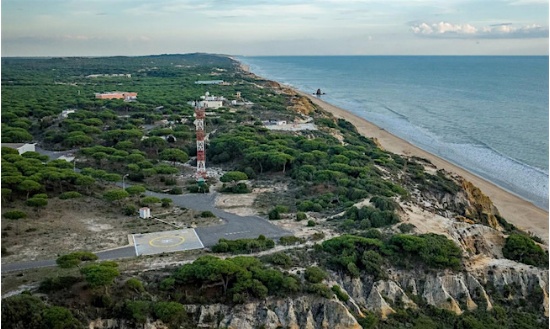
Views of the Arenosillo
NASA ceded radar and meteorological equipment, as well as rocket ramps. El Arenosillo became an International Rocket Launching Base for very diverse studies and in different atmospheric layers, with the presence of numerous research organisms, European and American preferentially.

Launch of an INTA 300 rocket from El Arenosillo
A number of rocket prototypes developed at INTA were also launched, such as INTA 100, INTA 250 and INTA 300, activities that contributed to the training of numerous engineers who later became part of important satellite projects and companies associated with these investigations in National and international. In the 1980s, the satellite technology was closing the need for the use of the rocket and this activity was declining, until in 1994 El Arenosillo stopped operating as a sounding rocket base, although it is still active in other INTA programs and Ministry of Defense, mainly atmospheric studies and tests of unmanned aircraft (RPA), under the name of El Arenosillo Testing Center (CEDEA), under the Aeronautical Systems Subdirectorate of INTA.
Satellites
The first Spanish satellite was launched in November 1974. During the test phases, it was when electromagnetic compatibility tests were carried out in Spain for the first time. INTASAT was launched by a NASA rocket from the Vandenberg base in California.
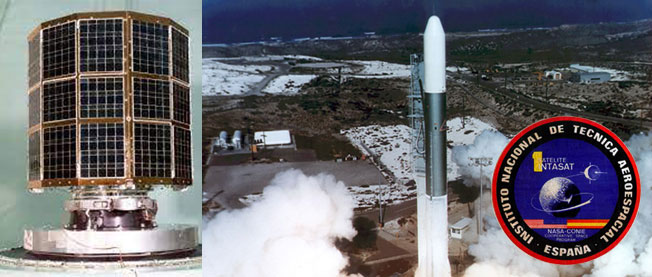
From left to right, INTASAT satellite, INTASAT launch into space in November 1974, by a NASA Delta rocket, from the Vandenberg base in California, and the INTASAT-1 mission insignia
Twenty years later, the next satellite, MINISAT, was launched. Then came NANOSAT (2004) and 5 years later NANOSAT 01-B, which was launched into space in July 2009.

From left to right, MINISAT satellite image and its integration into the carrier rocket
NANOSAT 1B is a nano communications satellite developed entirely in Spain, which took over from NANOSAT 01, whose life span was about to become extinct. It was located in the same polar orbit, about 650 kilometers high, which allows it to cover the entire planet to link with scientific stations, as its predecessor had done.

From left to right, NANOSAT 1B, NANOSAT 01 and the emblem of the NANOSAT program
NANOSAT is a program of small satellites (20 kg of weight) that performs scientific and technological missions of low cost, like to test nano magnetic sensors and solar or intrasatellite optical communications that substitute the traditional wiring. Nano satellites embody a new design concept for space systems and an opportunity to access to the space with lower costs and development time. Thus, the NANOSAT program includes a series of new launches with concrete applications since these small platforms are especially suitable for in-orbit demonstration missions of instruments, components and technologies to support larger programs.
The strategic objective with the internal program of small satellites, like OPTOS, a "picosatellite" of less than 3 kg, is to enable universities and Spanish scientific groups to fly payloads at affordable prices for them and with continuity over time, with frequent missions every three or four years.
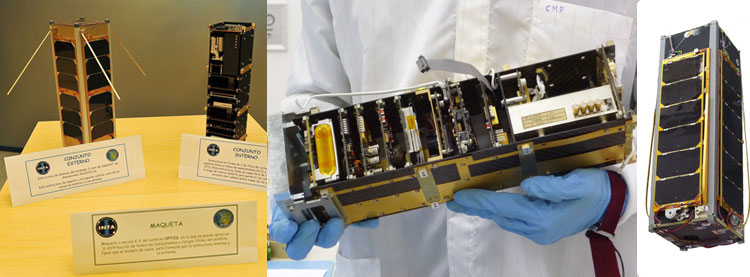
From left to right, OPTOS model, external and internal assembly, image of the OPTOS Pico-satellite and OPTOS Satellite with the drop-down panels in launch configuration (folded)
The PAZ satellite, operated and exploited by Hisdesat, was launched into space from the Vandenberg air base (California) by SpaceX aboard a Falcon-9 rocket on February 22, 2018 . PAZ is the Spanish radar satellite for Earth Observation and is part of the PNOTS program. It uses the so-called X band (approximately 3 cm wavelength), which is the one that allows the best spatial resolution within the microwave range. In PAZ, although it depends on the mode of operation, the image resolution will often be less than 5 meters per pixel. Its main applications will be identification and reconnaissance tasks (for example, marine traffic, floods, oil spills...), qualitative cartography of land use or generation of digital terrain models.
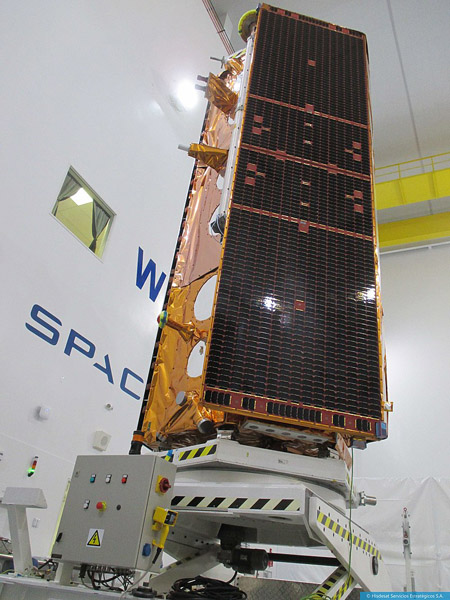
Paz Earth observation satellite at SpaceX, being prepared for launch
Remote Piloted Aircraft or RPA
INTA opened a new and important line of work with unmanned aircraft (UAV or, more recently, RPA).
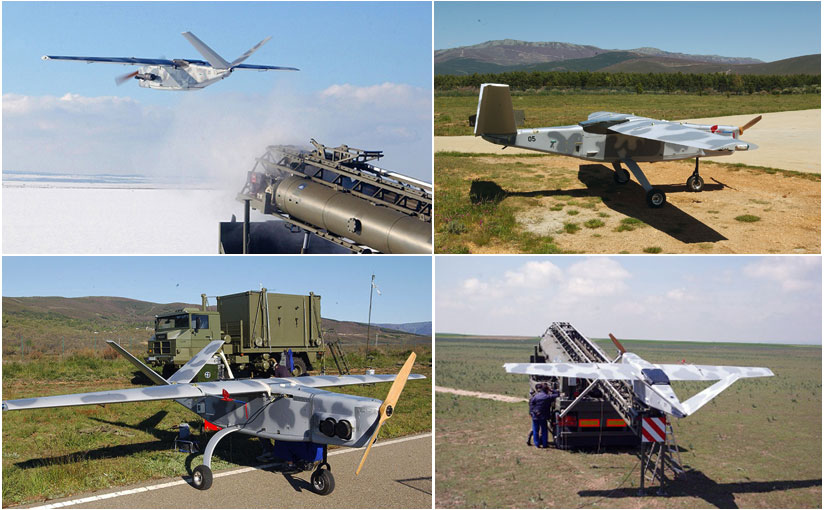
SIVA on the launch pad and SIVA ashore
SIVA is a medium-sized unmanned aerial system developed as a trainer and a demonstrator of technologies, whose mission is to monitor at real-time, delivering video images (simultaneously in the visible and infrared bands) to a mission control station, where they are evaluated or relayed to an upper command center. This program would give rise to the entire development of the UAV (RPA) by INTA. In fact, the SIVA Project, besides to the unmanned tactical-type aircraft called this way, it had some additional projects in place, of which the ALO (Avión Ligero de Observación) and the Diana, conceived as a target drone low cost. Works on the ALO, in turn, generated another low-speed white aircraft, the ALBA (Avión Ligero Blanco Aéreo), used today by the Armed Forces at the El Arenosillo Testing Center.
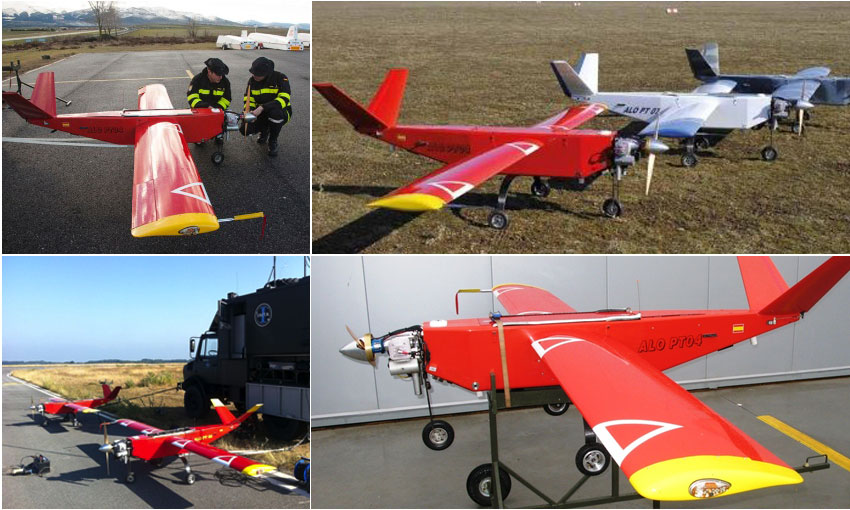
ALO ashore
INTA has continued working in this field. Among the current programs are the AVIZOR, an improved version of the SIVA, and the MILANO, an all-weather observation aircraft of medium altitude and high autonomy, capable of operating without the need for a radio link in sight, via satellite, between the station Control and the air vehicle. The MILANO system is based on a larger air vehicle than the previous ones in order to be able to cover aspects of mission that go beyond the tactical ones. Thus, it is possible to be considered as a system "bridge" between the usual tactical and the strategic one, MALE type, which some consortiums develop for the international market. The MILANO aerial vehicle, with a service weight of 900 kg, will be able to perform missions of up to 20 hours autonomy with reach beyond the horizon (BLOS) and a set of payloads up to 150 kg.

MILANO ashore and MILANO in assembly workshop
Research, Development, Innovation, Certification and Testing
The Institute has not stopped evolving throughout its history, adapting to the challenges of each moment. Thus, it has been redefining its activity in function of the technological changes or the progress of the national industry, which was acquiring capacities that previously were only of the Institute. In those occasions, INTA has been able to move away to give way to the industry, taking advantage to take a step forward and incorporate new technologies.
INTA has always developed and put at the service of society non-specifically aerospace activities, but which create technological synergies or constitute an important support of aerospace activity, as is the case of automotive or metrology.

Braking test in the INTA tracks
All the work developed in the Institute can be grouped into two main areas: Research, Development and Innovation (R & D), on the one hand, and Certification of Essays, on the other. In addition to research and technological development within the aerospace field, the Institute has the functions of advise, technical support, testing and certification, both for the Armed Forces and for the industry, for which it has more than 100 laboratories, ranging from Fuel analysis to aircraft certification, aerodynamics, power electronics, space astrophysics or scientific payloads. Among these functions, the most important are those related to aircraft certification and testing for development, qualification and certification of equipment, systems, platforms and payloads. About 1,400 people work in INTA.

Center of Metrology and Calibration
In addition to the large programs cited, INTA maintains other lines of research, paying special attention to emerging technologies. In this activity of dynamization of new technologies we can mention the diffuse optical communications inside the satellites, whose objective is to replace the connectors and the wiring of the data buses by wireless communications in the infrared range, thanks to the miniaturization Of optoelectronic components. This achieves a decrease in volume and mass, as well as other advantages such as immunity to interference.
Also new materials and nano-structured materials for the manufacture of smaller and more accurate solar and magnetic sensors, such as porous silicon and the use of devices for devices based on the effect of giant magnetoresistance. Likewise, in the field of new materials we can mention the coatings for optical space components, in order to be more durable against space radiation, one of the causes of the degradation of these components and therefore of life reduction useful of the satellite.
Within the space optics, highlights the development of liquid crystal optical retarders, which have been used for the first time in a project to observe and measure solar magnetic fields, the IMAX-SUNRISE project. These devices provide spectral discrimination in an order of magnitude higher than conventional filters.

IMAX-SUNRISE
All of these emerging technologies respond to the demanding demands of the aerospace sector, which can be summarized in low weight, reduced consumption, high performance and reliability. It is important to point out that all this activity is carried out with a high degree of national and international cooperation with universities, companies and other research centers, because in the internal programs, although led by INTA, the maximum external collaboration is sought.
Large facilities and remarkable centers
A particularly relevant facility is theCenter for Astrobiology (CAB), which is dependent on INTA and CSIC and is located on the main INTA campus in Torrejón de Ardoz. Inaugurated in 2003, the CAB is dedicated to researching the conditions that make possible the emergence and maintenance of life in the Universe
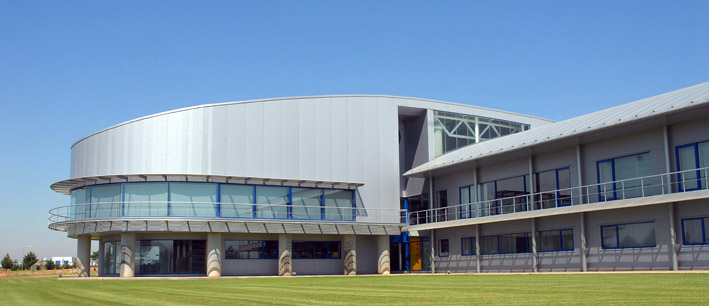
CAB Main building, Torrejón de Ardoz
It is the first center of the World associated to the Institute of Astrobiology of the NASA (NAI), with which it shares objectives and scientific projects. His works are being of great support to the NASA engineers for the design of the missions to Mars in the search for life or the traces of it, as well as future manned missions to that planet. For example, CAB is leading Spanish participation in NASA's Mars Science Laboratory (MSL) project, which is currently analyzing the surface and atmosphere of Mars.
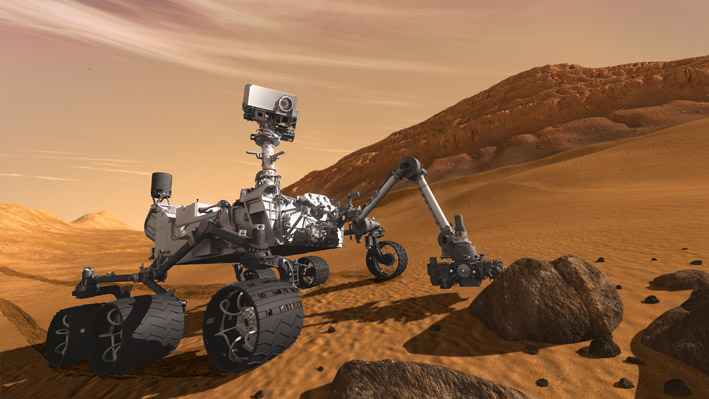
Recreation of the Mars Science Laboratory (also known as "rover" Curiosity) ©NASA
The Technological Institute “La Marañosa”, today transformed into the General Subdirectorate of Terrestrial Systems, was created in 2006 and is known by its acronym ITM. In 2010 all the activities were transferred to the new facilities of La Marañola, in San Martín de la Vega (Madrid). In 2014, when Law 15/2014 on the rationalization of the public sector was published, the ITM was integrated into INTA, dealing with activities such as advice, evaluation, tests, trials and technological observations, or technical direction of research and development projects, among other.
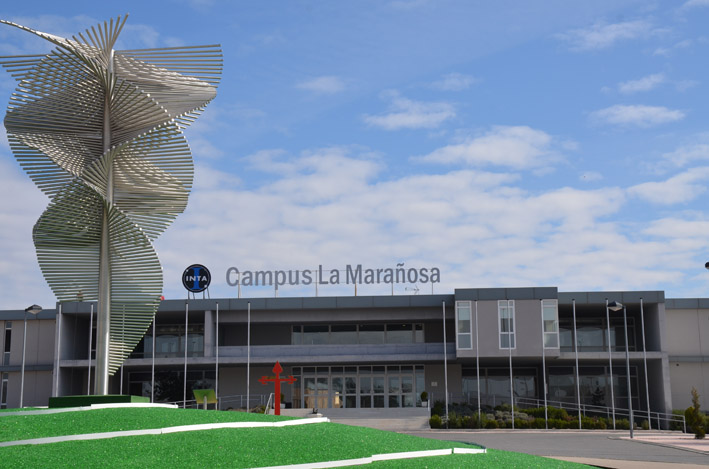
Main building of the La Marañosa Campus
The Institute has different technological areas such as Weapons, Electronics, Metrology, Nuclear, Biological and Chemical Defense, Optronics and Acoustics, etc.

From left to right, Access to the NBC laboratories and the Optronics Laboratory
The Torregorda's Trials Center (TEC), located in Cádiz, has its origins in the Polygon of Experiences Costilla and the Polygon of Experiences González Hontoria that in 1999 formally integrate creating the present CET. But its starts are very previous since since the thirties both polygons have collaborated together. The missions of the CET were and are the evaluation, reception, homologation and surveillance of weapons and ammunition with a caliber greater than 20 mm. In your field of fire you can make shots with a range of over 40 km.
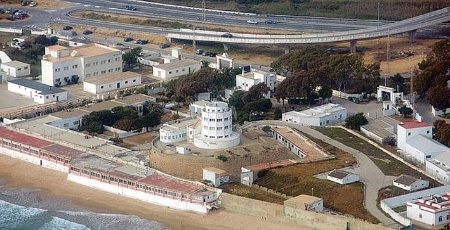
Torregorda Center
The El Pardo Hydrodynamic Experience Channel (CEHIPAR), today converted into INTA's Naval Systems Sub-Directorate, has assisted, since 1928, in the unstoppable development of hydrodynamics. The small initial group of 11 existing channels in the world in 1934 has grown to around 120 today, although the vast majority are small facilities for teaching purposes. With close to 25,000 tests, CEHIPAR has tested more than 2,700 ship models and 2,600 propeller models.
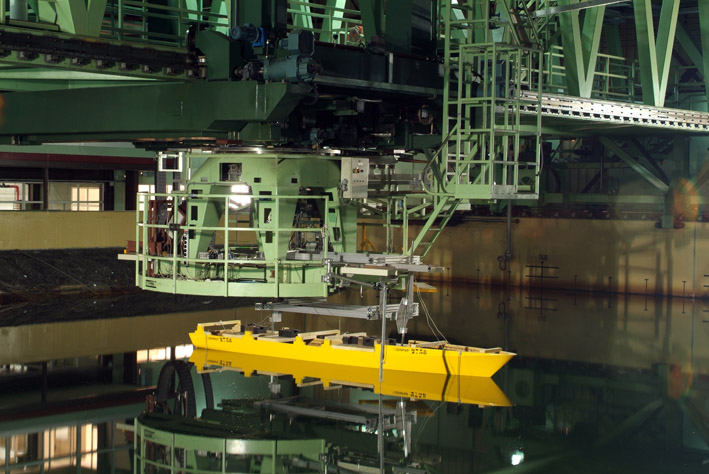
Wave channel in CEHIPAR
Efemérides
|
|
1942 Fundación del INTA (Instituto Nacional de Técnica Aeronáutica). |
|
|
1960 Primer acuerdo de cooperación con la NASA. Misiones Mercury. |
|
|
1963 Nueva denominación: Instituto Nacional de Técnica Aeroespacial «Esteban Terradas». |
|
|
1974 INTASAT, primer satélite español. Lanzado al espacio por la NASA en noviembre de ese año. |
|
|
1977 Creación del Ministerio de Defensa. |
|
|
1986 Primera Ley de la Ciencia: el INTA se convierte en OPI (Organismo Público de Investigación). |
|
|
1991 Inauguración del LAEFF (Laboratorio de Astrofísica Espacial y Física Fundamental. INTA - CSIC - Universidad). |
|
|
1992 HISPASAT, primer programa español de satélites de comunicaciones.
|
|
|
1997 MINISAT 1, primer satélite lanzado al espacio desde España (Canarias). Desarrollado por el INTA.
|
|
|
2003 Inauguración del Centro de Astrobiología, CAB (INTA - CSIC). |
|
|
2004 NANOSAT 1, primer “nanosatélite” desarrollado en el INTA.. |
|
|
2005 XTAR-EUR, primer satélite español para comunicaciones militares. |
|
|
2009 NANOSAT 1B, L, lanzado al espacio en julio. Segundo de la serie y desarrollado en el INTA. |
|
|
2010. El INTA se convierte en "Medio Propio y Servicio Técnico de la A.G.E.". |
|
|
2012 70 Aniversario del INTA. |
|
|
2013 OPTOS, primer “picosatélite” del INTA (menos de 3 kg de peso). |
|
|
2015, integración de los centros de I+D de la Defensa en el nuevo INTA (RD 925/2015). |
|
|
2016 Aceptación oficial del centro europeo GSC-Galileo, situado en el INTA-Torrejón. |
 |
2017 75 Aniversario del INTA (1742-2017) |


























